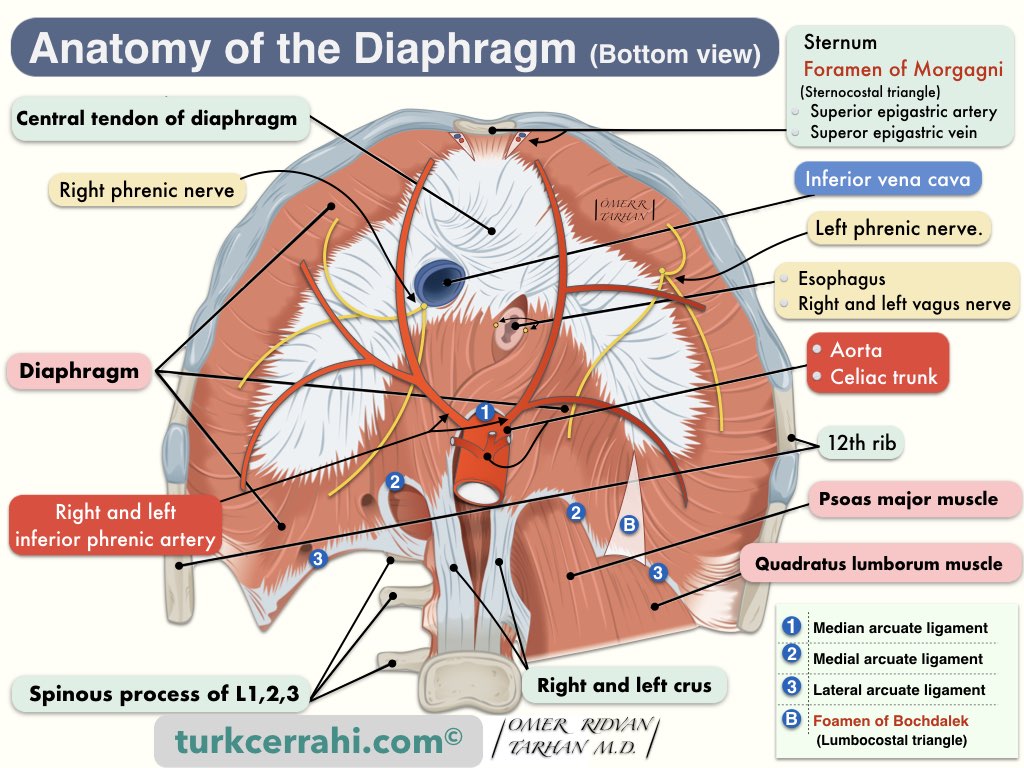The diaphragm is a large, dome-shaped musculomembranous (musculotendinous) structure that separates the abdominal and thoracic (chest) cavities. The tendinous center portion of the diaphragm is called the central tendon (centrum tendineum). The diaphragm is the main muscle responsible for breathing (respiration). The muscle tissue that forms the diaphragm’s edges is striated (i.e. skeletal) muscle tissue. However, the diaphragm muscle and respiration are normally involuntary (automatic).

Image retrieved from Wikipedia on 28 April 2017 under Creative Commons Attribution-ShareAlike 4.0 International (CC BY-SA 4.0). Image’s Page. OpenStax the copyright holder of this work. Some descriptions and labels of the image have been reorganized by turkcerrahi.com/en
Some common diaphragm diseases include:
- Diaphragmatic Hernias: Part of the abdomen or other abdominal organs passing through a weak point in the diaphragm into the chest cavity.
- Congenital
- Bochdalek hernia (in the sternocostal triangle, retrosternal, or parasternal hernia)
- Morgagni hernia (posterior and usually on the left side (85%))
- Acquired
- Hiatus hernia: Here, hiatus refers to the esophageal hiatus (opening through which the esophagus passes). Part of the stomach protrudes through this opening into the chest cavity, causing acid reflux and other symptoms.
- Traumatic diaphragm rupture: Blunt traumas such as traffic accidents or penetrating traumas like stab wounds or gunshot injuries can cause diaphragm injury leading to diaphragm hernia.
- Iatrogenic diaphragm hernia: Can develop due to abdominal and thoracic surgeries.
- Congenital
- Diaphragm Paralysis: A condition in which the diaphragm becomes weakened or paralyzed, often due to nerve damage or injury.
- Diaphragm Eventration: A condition in which part of the diaphragm muscle is replaced by fibrous tissue, causing the affected part of the diaphragm to become weak and bulge out.